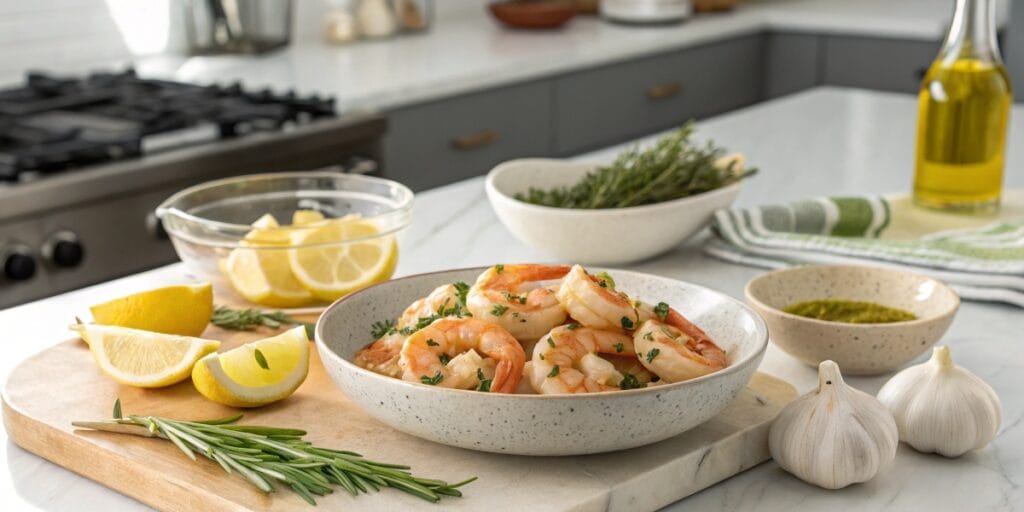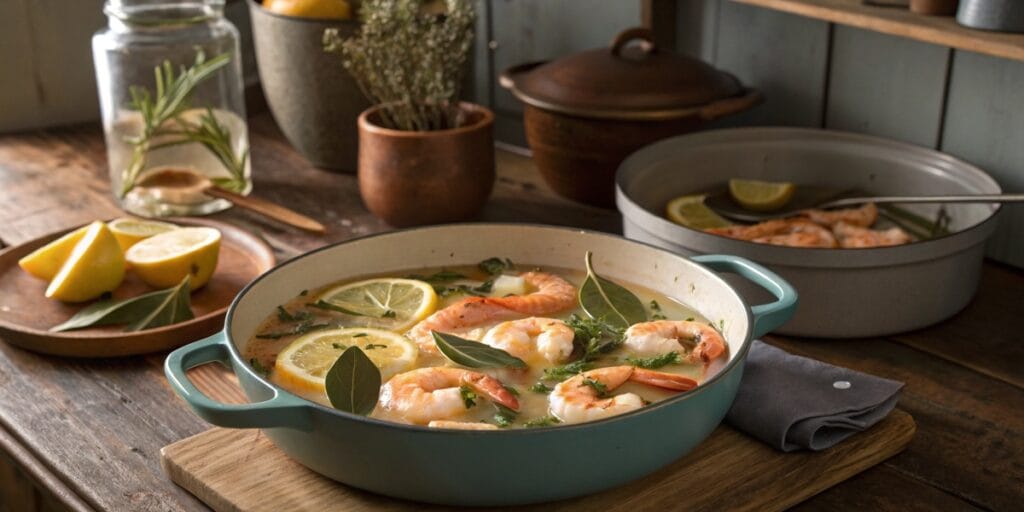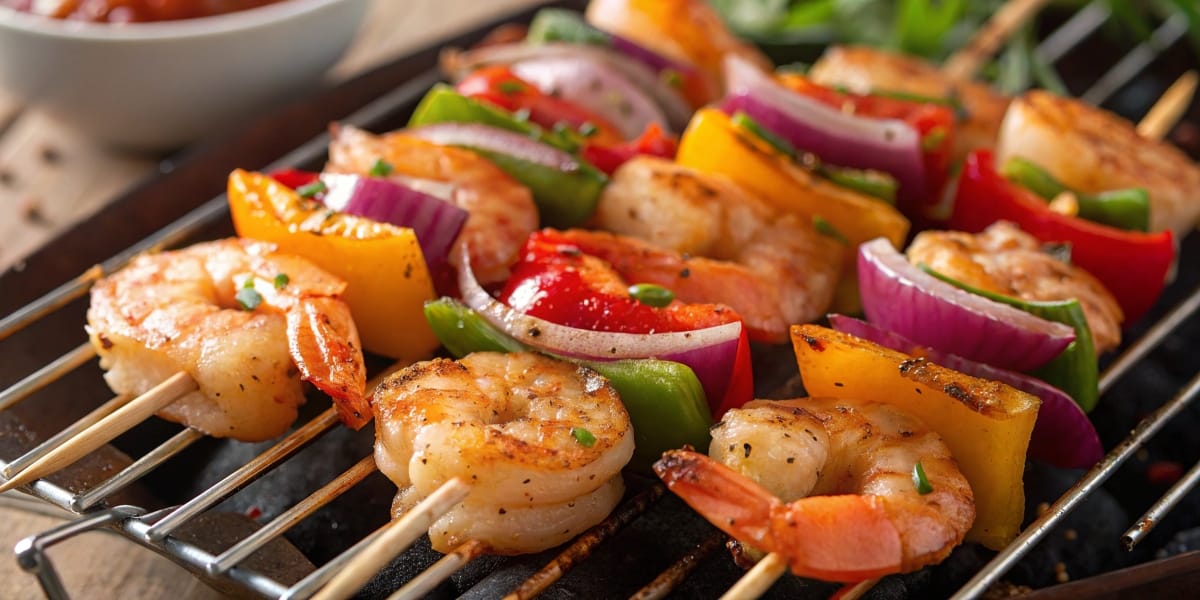What’s the Tastiest Way to Cook Shrimp?
Shrimp is a versatile and beloved seafood delicacy enjoyed worldwide for its juicy texture and mild flavor. Whether you’re a seafood enthusiast or just starting to explore cooking shrimp, this guide will introduce you to the tastiest ways to cook shrimp and elevate your culinary game. From preparation tips to the best cooking techniques, we’ve got you covered. Check out our step-by-step seafood preparation guide for detailed insights on preparing shrimp and other seafood delicacies.
Understanding Shrimp Varieties
ways to cook shrimp
Before diving into cooking methods, it’s essential to understand the different types of shrimp. Knowing your shrimp variety can significantly impact your dish’s taste and texture:
- White Shrimp: Mild and sweet, perfect for grilling or poaching.
- Brown Shrimp: Rich and robust flavor, ideal for sautéing.
- Pink Shrimp: Delicate and sweet, best for searing or light broiling.
For more insights on seafood varieties, visit our comprehensive seafood guide.
Freshness Matters: Always choose fresh shrimp with a mild, oceanic smell. Frozen shrimp can be a great alternative if defrosted properly. Learn more about how to defrost and store shrimp for the best results.
Wild-Caught vs. Farmed Shrimp
When selecting shrimp, you may wonder whether wild-caught or farmed shrimp is better. Wild-caught shrimp often have a firmer texture and more robust flavor due to their natural diet. Farmed shrimp, on the other hand, are more consistent in size and often more affordable. Choose based on your priorities and availability. Explore our seafood sourcing guide for more tips.
Preparing Shrimp for Cooking
Preparation is key to achieving perfectly cooked shrimp. Follow these steps for optimal results:
- Clean and Devein: Remove the shell and devein the shrimp to ensure a clean presentation and taste.
- Peel or Not to Peel: Cooking with the shell on can enhance flavor but requires extra effort during mealtime.
- Brining for Flavor: Soak shrimp in a brine (1/4 cup salt per quart of water) for 30 minutes to enhance tenderness and seasoning absorption.
For more detailed preparation tips, visit our article on seafood cleaning and brining techniques.
Thawing Frozen Shrimp Correctly
Frozen shrimp must be thawed properly to preserve texture and flavor. Place shrimp in a colander under cold running water for 15-20 minutes. Avoid using hot water or a microwave, as these methods can partially cook the shrimp. Check out our shrimp thawing guide for more detailed instructions.
Essential Ingredients and Seasonings
Shrimp pairs well with a wide variety of seasonings and ingredients. Here are some favorites:
- Classic Combos: Garlic, butter, lemon, and parsley.
- Asian Flavors: Soy sauce, ginger, sesame oil, and scallions.
- Spicy Additions: Paprika, chili flakes, and cayenne.
- Herbal Touches: Basil, cilantro, and dill.
Marinades to Elevate Your Dish
Marinating shrimp before cooking adds layers of flavor. Here are three quick marinades to try: ways to cook shrimp
- Garlic Lemon Marinade: Mix olive oil, minced garlic, lemon juice, and parsley.
- Spicy Cajun Marinade: Combine Cajun seasoning, paprika, cayenne pepper, and olive oil.
- Asian Soy-Ginger Marinade: Blend soy sauce, grated ginger, sesame oil, and a dash of honey.
Experimenting with marinades can add depth to your shrimp dishes. For example, try our citrus marinade recipe for a zesty twist or learn how to make a rich garlic butter sauce with our quick sauce guide.

Top ways to cook shrimp
Searing Shrimp
Searing locks in the shrimp’s juices and creates a delicious caramelized crust:
- Heat a skillet over medium-high heat and add butter or oil.
- Season shrimp with salt and pepper.
- Cook shrimp for 2-3 minutes per side until they turn pink and opaque.
Discover our step-by-step guide to searing seafood for the best results.
Poaching Shrimp
Poaching results in tender and flavorful shrimp, ideal for salads and appetizers:
- Bring a pot of water to a gentle simmer.
- Add lemon slices, bay leaves, and salt.
- Cook shrimp for 3-5 minutes until just opaque.
Pair your poached shrimp with easy homemade cocktail sauce for a perfect starter.
Grilling Shrimp
Grilled shrimp offers a smoky flavor and is perfect for summer meals:
- Preheat the grill to medium-high heat.
- Skewer shrimp to prevent them from falling through the grates.
- Grill for 2-3 minutes per side, brushing with marinade as they cook.
Try our spicy grilled shrimp skewers recipe for a crowd-pleaser at your next barbecue.
Baking Shrimp
Baking shrimp is a hands-off method that’s perfect for batch cooking:
- Preheat your oven to 400°F (200°C).
- Toss shrimp with olive oil, garlic, and your favorite seasonings.
- Spread them in a single layer on a baking sheet.
- Bake for 8-10 minutes or until pink and opaque.
For a more indulgent option, learn how to prepare shrimp au gratin.
Deep-Frying Shrimp
Crispy and golden, deep-fried shrimp are a crowd favorite:
- Coat shrimp in seasoned flour, egg wash, and breadcrumbs or panko.
- Heat oil to 350°F (175°C) in a deep pan.
- Fry shrimp for 2-3 minutes until golden brown.
Serve your fried shrimp with spicy dipping sauce.
Enhancing Flavor with Sauces and Sides
No shrimp dish is complete without complementary sauces and sides:
- Sauces:
- Classic cocktail sauce
- Garlic aioli
- Spicy sriracha mayo
- Sides:
- Garlic butter rice
- Grilled vegetables
- Fresh salads
Creative Pairings for Shrimp Dishes
For more unique pairings, consider:
- Coconut Rice: Sweet and aromatic, pairs beautifully with spicy shrimp dishes.
- Zucchini Noodles: A low-carb alternative that complements garlic butter shrimp.
- Avocado Salad: Creamy avocado balances the robust flavors of Cajun shrimp.
For pairing ideas, check out our shrimp side dish guide.

Frequently Asked Questions (FAQs) about ways to cook shrimp
How can I tell when shrimp are fully cooked?
Shrimp are done when they turn pink and opaque, with a slight curl in shape. Learn more in our shrimp cooking timing guide.
Is it better to cook shrimp with the shell on or off?
Cooking with the shell on enhances flavor, but peeling makes them easier to eat. Discover the pros and cons in our shrimp shell-on cooking guide.
What are the best methods to prevent shrimp from becoming rubbery?
Avoid overcooking. Shrimp cook quickly and should be removed from heat as soon as they’re opaque. Find additional tips in our seafood cooking techniques article.
Can I use frozen shrimp, or is fresh shrimp preferable?
Frozen shrimp is a great alternative if thawed properly. Place them in a bowl of cold water for 15-20 minutes to defrost. Read our guide on how to thaw shrimp effectively.
How should I store leftover cooked shrimp?
Refrigerate in an airtight container for up to 3 days or freeze for longer storage. Explore our seafood storage tips.
Final Thoughts of ways to cook shrimp
Cooking shrimp is an art that offers endless possibilities, from simple seared dishes to extravagant grilled or deep-fried creations. By selecting fresh or properly thawed shrimp, experimenting with marinades, and pairing them with complementary sides and sauces, you can create memorable meals for any occasion. Whether you’re preparing shrimp for a casual family dinner or an elegant gathering, the techniques and tips shared in this guide will help you achieve mouthwatering results. Dive into our other seafood recipes to further expand your culinary repertoire, and start creating your own seafood masterpieces today!

